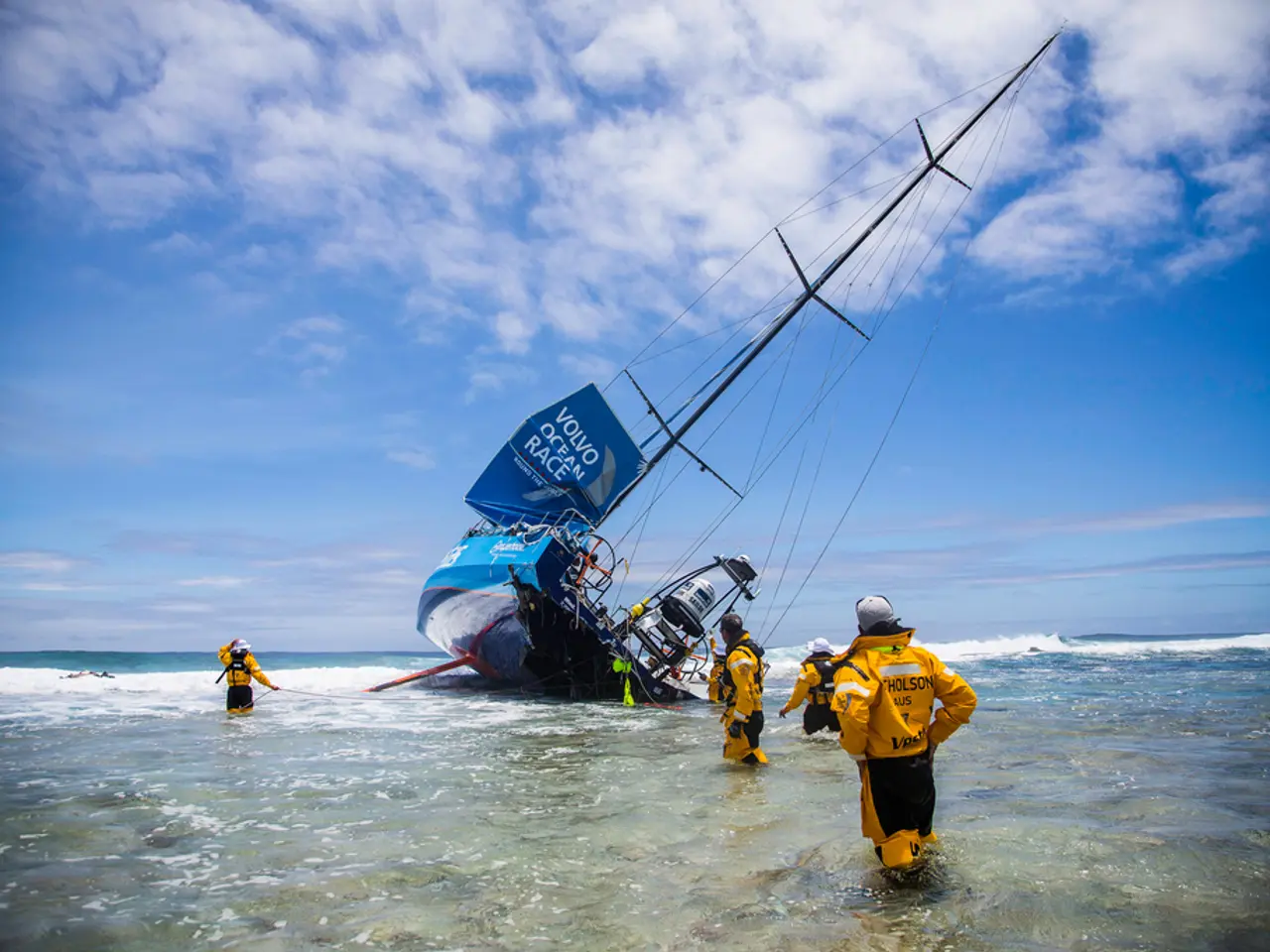Stricken Vessel Near Bali: At Least Four Confirmed Deaths and Over Thirty Individuals Presumed Missing - Ferry capsizes off Bali coast, resulting in at least four fatalities and multiple missing persons.
Indonesia's archipelago, home to approximately 17,000 islands, is no stranger to maritime tragedies, particularly in its ferry transport sector. A recent example occurred in July 2025, when the ferry "KMP Tunu Pratama Jaya" sank near Bali, carrying 65 people and 22 vehicles, including trucks.
The ferry was traveling from Java to Bali when it went down, with survivors reporting engine room leaks and rapid sinking upon tilting. Many passengers were found unconscious after drifting in choppy waters for hours, indicating difficulties in emergency response and lifesaving equipment availability.
This incident is not an isolated case in Indonesia's ferry history. From 2020 to 2025, there have been multiple high-profile ferry disasters involving mechanical failures, fabricated inspection reports, fires, collisions, and overloading, causing numerous fatalities and highlighting systemic vulnerabilities in maintenance, crew training, and safety protocol adherence.
In response to these tragedies, the Indonesian government has implemented stricter maritime safety regulations since 2025. These include stricter adherence to ISO standards for vessel inspections, increased penalties for falsified inspection reports, and the promotion of technology adoption to reduce human error and mechanical failures, such as real-time vessel monitoring and improved maintenance.
Regional organisations like ASEAN are also pushing for harmonized safety standards across Southeast Asia to improve consistency. However, challenges remain, as safety enforcement can lapse, especially in busy inter-island ferry routes like Java-Bali that often face overloading and insufficient life-saving equipment.
At the time of writing, 23 people have been rescued from the sunken ferry, but at least four people have died, and 38 remain missing. The disaster has once again brought to light the persistent safety concerns in Indonesia's ferry sector, a sector that plays a crucial role in connecting its vast archipelago.
It is currently unclear if there were any foreign passengers on board the sunken ferry. Bali, a popular vacation destination for international tourists, has seen another maritime disaster, following an incident in March when a boat capsized off Bali, resulting in the death of an Australian woman.
The ferry from Java to Bali typically takes about an hour, and the ferry is commonly used by people who want to transport their vehicles. The sinking of the "KMP Tunu Pratama Jaya" serves as a stark reminder of the ongoing risks for ferry passengers in Indonesia's archipelago, where safety concerns persist despite regulatory efforts.
This incident also echoes a tragedy that occurred in 2018, when a ferry sank in one of the world's deepest lakes on the island of Sumatra, causing over 150 deaths. The Indonesian government and regional organisations continue to work towards improving maritime safety, but the challenges remain significant, and the lives lost serve as a poignant reminder of the urgent need for action.
- Other tragedies in Indonesia's maritime history have involved war-and-conflicts, migration, travel, and car-accidents, further highlighting the need for improved safety measures.
- The lifestyle of many people in the Indonesian archipelago revolves around travel, whether for work, cultural-travel, adventure-travel, or budget-travel, making maritime safety a critical concern.
- The news of the sinking ferry has been covered extensively in general-news outlets, with reports of fires, rescues, and the missing passengers making headlines.
- Crime-and-justice reporters have also been on the scene, covering the investigation and potential penalties for any negligence or violations of safety regulations.
- The disaster has affected not only the local community but also the global sports community, as several sports stars had been booked on the ferry for sports-betting or travel-related engagements.
- Weather-forecasting services played a crucial role in rescuing survivors as they provided updated information on the wind and sea conditions during the rescue efforts.
- In the aftermath of the disaster, there have been calls for increased transparency and accountability from both the Indonesian government and the ferry operators to help restore trust in the sector.
- The importance of political intervention in improving maritime safety cannot be overstated, as policy-and-legislation play a vital role in setting and enforcing safety standards.
- Unfortunately, the sinking of the KMP Tunu Pratama Jaya is a reminder that despite efforts to improve maritime safety, accidents will continue to occur until a comprehensive and effective solution is implemented.




